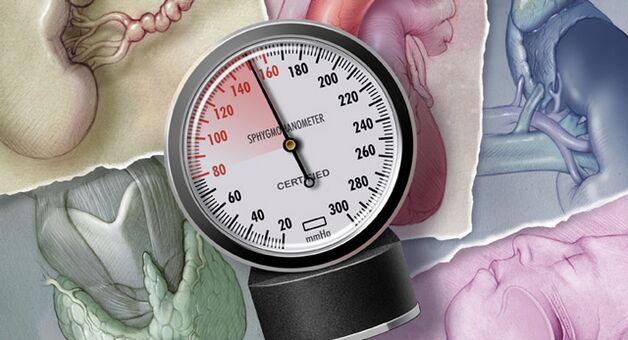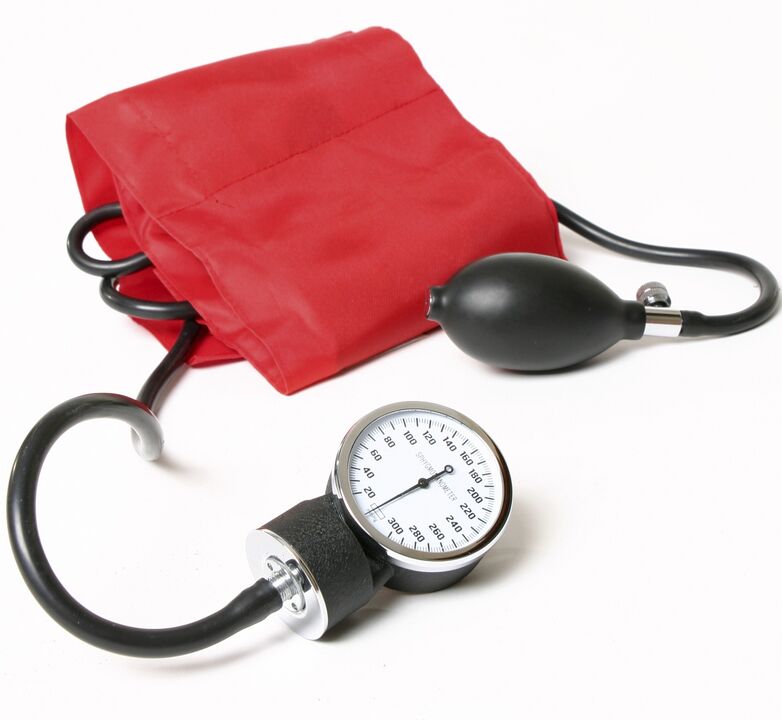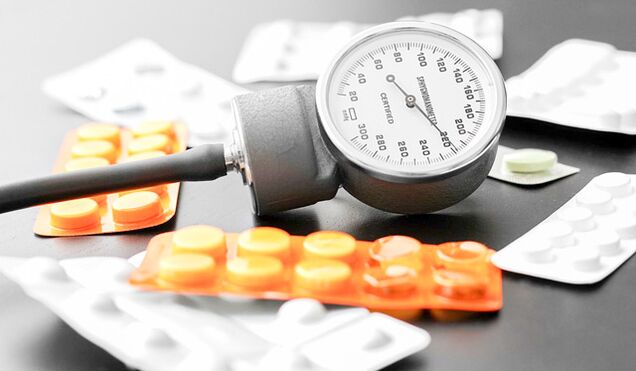
Hypertension (HTN) is one of the most common diseases of the cardiovascular system, which, according to approximate data, affects a third of the world's population. By the age of 60-65, more than half of the population is diagnosed with high blood pressure. The disease is called the "silent killer" because its symptoms may be absent for a long time, while changes in the vascular wall begin already in the asymptomatic stage, greatly increasing the risk of vascular accidents.
In Western literature, the disease is called arterial hypertension (AH). Others have adopted this wording, although "hypertension" and "hypertension" are still commonly used.
Increased attention to the problem of arterial hypertension is not so much its clinical manifestations as complications in the form of acute vascular disorders of the brain, heart and kidneys. Their prevention is the main goal of treatment aimed at maintaining normal blood pressure (BP).
It is important to identify all possible risk factors,and clarifying their role in disease progression. The relationship between the degree of hypertension and existing risk factors appears in the diagnosis, which simplifies the assessment of the patient's condition and prognosis.
For most patients, the numbers in the diagnosis after "AH" do not mean anything, although it is clear that the higher the rate and risk index, the worse the prognosis and the more severe the pathology. In this article, we will try to understand how and why the diagnosis ofone degree or another of high blood pressure and what is involved in determining the risk of complications.
Causes and risk factors of high blood pressure
There are many causes of arterial hypertension. Govt
The main cause of primary hypertension is considered to be stress and psycho-emotional overload, which contribute to disrupting the central mechanisms of cerebral pressure control, then humoral mechanisms suffer, and target organs (kidneys, heart, retina) are affected.

Risk factors for high blood pressure are also known to everyone. Hypertension schools are established in the clinics, whose professionals inform the population about unfavorable conditions leading to high blood pressure. Any therapist or cardiologist will inform the patient about the risks at the first instance of high blood pressure.
Among the conditions predisposing to high blood pressure, the most important are:
- Smoking;
- Excessive salt in food, excessive fluid intake;
- insufficient physical activity;
- Alcohol abuse;
- overweight and fat metabolism disorders;
- Chronic psycho-emotional and physical overload.
If we can exclude the listed factors, or at least try to reduce their impact on health, then characteristics such as gender, age, and heredity cannot be changed, so we have to put up with it, but not forgetting the increasing risk.
Classification of arterial hypertension and determination of risk level
The classification of hypertension includes the determination of the stage and degree of the disease and the risk of vascular accidents.
Disease stagedepends on clinical manifestations. Highlights:
- Preclinical stage, when there are no signs of high blood pressure and the patient does not know about the increase in blood pressure;
- Stage 1 of hypertension, when the pressure has risen, crises are possible, but there are no signs of damage to the target organ;
- Stage 2 is accompanied by damage to target organs - hypertrophy of the heart muscle, changes in the retina of the eye are noticeable, and the kidneys suffer;
- In stage 3, stroke, myocardial ischemia, visual pathology, changes in large blood vessels (aortic aneurysm, atherosclerosis) are possible.
The degree of high blood pressure
Determining the degree of hypertension is important in assessing risk and prognosis and is based on pressure readings. It must be said that normal blood pressure values also have different clinical significance. So the indicator is at most 120/80 mmHg. Art. it matters

From the moment the blood pressure reached 140/90 mm Hg. Art. we can already talk about the presence of the disease. This indicator is used to determine the degree of high blood pressure:
- The 1st degree of hypertension (HTN or AH stage 1 in the diagnosis) means a pressure increase between 140-159/90-99 mmHg. Art.
- Stage 2 headaches are accompanied by numbers of 160-179/100-109 mmHg. Art.
- In stage 3 hypertension, the pressure is 180/100 mmHg. Art. and higher.
It happens that the value of the systolic pressure rises to 140 mm Hg. Art. and higher, while the diastolic value is within normal values. In this case, they are talking about it
The most accurate diagnosis of the degree of high blood pressure is possible when the disease is diagnosed for the first time, when the treatment has not yet been completed and the patient has not taken antihypertensive drugs. During therapy, the numbers decrease, and when you stop, they can increase strongly, so it is no longer possible to assess the level properly.
The concept of risk in diagnosis
It is dangerous because of the complications of high blood pressure. It is no secret that the vast majority of patients do not die or become disabled because of high blood pressure, but because of the acute disorders to which it leads.
Strokes or ischemic necrosis, heart attacks, kidney failure are the most dangerous conditions caused by high blood pressure. In this regard, after a thorough examination for each patientthe determination of the risk, indicated by the numbers 1, 2, 3, 4 in the diagnosis. Thus, the diagnosis is based on the degree of hypertension and the risk of vascular complications (e. g. hypertension/hypertension stage 2, risk 4).
The main risk factors affecting the prognosis are:
- The patient's age is over 55 for men and over 65 for women;
- Smoking;
- Lipid metabolism disorders (exceeding the norm of cholesterol, low-density lipoproteins, reduced high-density lipid fractions);
- Presence of cardiovascular pathology in the family in blood relatives under the age of 65 in women and in men under the age of 55;
- Overweight if the abdominal circumference exceeds 102 cm for men and 88 cm for women.
The listed factors are considered the main factors, but many patients with high blood pressure suffer from diabetes, reduced glucose tolerance, lead a sedentary lifestyle, and abnormalities in the blood coagulation system occur in the form of an increase in the concentration of fibrinogen. These factors are taken into account
Target organ damage characterizes hypertension from stage 2 onwards and serves as an important criterion for determining risk, therefore the patient's examination includes an ECG and cardiac ultrasound to determine the degree of muscle, blood and hypertrophy. urine test for indicators of kidney function (creatinine, protein).
First, the heart suffers from high blood pressure, which pushes blood into the vessels with increased force. As the arteries and arterioles change, when their walls lose their elasticity and the lumens become spasmodic, the load on the heart gradually increases. A typical feature taken into account when stratifying risk
The involvement of the kidneys as a target organ is indicated by an increase in the level of creatinine in the blood and urine, as well as the appearance of albumin protein in the urine. Against the background of high blood pressure, the wall of the large arteries thickens, atherosclerotic plaques appear, which can be detected by ultrasound (carotid, brachiocephalic arteries).
The third stage of hypertension is associated with an associated pathology, that is, hypertension.Among the associated diseases, the most important in terms of prognosis are stroke, transient ischemic attacks, heart attack and angina, nephropathy due to diabetes, kidney failure, and retinopathy (retinal damage) due to hypertension.
So, the reader will probably understand how to independently determine the degree of headache. This is not difficult, you just need to measure the pressure. Then you can think about the presence of certain risk factors, taking into account age, gender, laboratory parameters, ECG data, ultrasound, etc. Basically everything above.
For example, a patient's blood pressure corresponds to stage 1 hypertension, but at the same time he has had a stroke, which means that the risk will be a maximum - 4, even if stroke is the only problem in addition to hypertension. If the pressure corresponds to the first or second degree, and the only noticeable risk factors are smoking and age in addition to fairly good health, then the risk will be moderate - 1 tbsp. (2 tablespoons), risk 2.
To make it clearer what the risk indicator in the diagnosis means, you can summarize everything in a small table. By determining its degree and "counting" the factors listed above, you can determine the risk of vascular accidents and complications of hypertension in a given patient. The number 1 means low risk, 2 - medium, 3 - high, 4 - very high risk of complications.
| Risk factors | BP 130-139/85-89, risk | GB (AH) 1, risk | GB 2, risk | GB 3, risk |
|---|---|---|---|---|
| none of them | 1 | 2 | 3 | |
| 1-2 | 1 | 2 | 2 | 4 |
| more than three factors/target damage/diabetes | 3 | 3 | 3 | 4 |
| associated pathology | 4 | 4 | 4 | 4 |
Low risk means that the probability of vascular accidents is no more than 15%, medium - up to 20%, high risk indicates the development of complications in one third of patients belonging to this group, with very high risk more than 30% of patientsprone to complications.
Manifestations and complications of headache
Manifestations of high blood pressure are determined by the stage of the disease. In the preclinical period, the patient feels well, only the reading of the tonometer indicates the developing disease.

As the changes in blood vessels and heart progress, the symptoms appear in the form of headache, weakness, decreased performance, periodic dizziness, visual symptoms in the form of reduced visual acuity, flashing "spots" in front of the eyes. All these signs are not expressed during the stable course of the pathology, but hypertensive crisiswhen it develops, the clinic becomes clearer:
- Severe headache;
- Noise, ringing in the head or ears;
- Darkening of the eyes;
- Pain in the area of the heart;
- shortness of breath;
- Facial hyperemia;
- Feelings of excitement and fear.
Hypertensive crises are triggered by traumatic situations, overload, stress, coffee and alcoholic beverages, so patients with an already established diagnosis should avoid such effects. Against the backdrop of a hypertensive crisis, the likelihood of complications increases sharply, including life-threatening ones:
- Bleeding or cerebral infarction;
- Acute hypertensive encephalopathy, possibly with brain edema;
- Pulmonary edema;
- Acute renal failure;
- A heart attack.
How to measure blood pressure correctly?
If there is reason to suspect high blood pressure, the specialist will first measure it. Until recently, it was believed that blood pressure readings could normally differ between hands, but in practice, differences of up to 10 mm Hg have been observed. Art. it can occur due to the pathology of the peripheral vessels, therefore, the differential pressure on the right and left hand should be treated with caution.

In order to obtain the most reliable data, it is recommended to measure the pressure three times in both arms at short intervals, recording all results obtained. For most patients, the smallest measured values are the most correct, but in some cases the pressure increases from measurement to measurement, which does not always indicate high blood pressure.
The wide range and availability of blood pressure measuring devices makes it possible to measure blood pressure in a wide range of people at home. Typically, hypertensive patients have a tonometer at home so that they can measure their blood pressure immediately if their health deteriorates. However, it is worth noting that fluctuations can also occur in absolutely healthy individuals without high blood pressure, so a single exceedance of the norm is not considered a disease, and for the diagnosis of high blood pressure, the pressure must be measured at different times. , under different conditions and repeatedly.
Blood pressure data, electrocardiographic data and heart auscultation results are essential in the diagnosis of hypertension. During listening, noise, increased timbres and arrhythmias can be detected. From the second phase onwards, the EKG shows signs of stress on the left side of the heart.
Treatment of high blood pressure
To correct high blood pressure, treatment regimens have been developed that include drugs belonging to different groups and with different mechanisms of action. Theirsthe combination and dosage are selected individually by the doctortaking into account the stage, concomitant pathology and the response of the hypertension to the given drug. After establishing the diagnosis of high blood pressure and before starting drug treatment, the doctor recommends non-pharmacological measures that significantly increase the effectiveness of pharmacological drugs and sometimes make it possible to reduce the dose of drugs or at least eliminate some of them.
Above all, it is recommended to normalize the system, eliminate stress and ensure physical activity. The aim of the diet is to reduce salt and fluid intake, to eliminate alcohol, coffee and drinks, as well as substances that stimulate the nervous system. If you are overweight, limit calories and avoid fatty, floury, fried and spicy foods.
Non-pharmacological measures in the early stages of high blood pressure can be so effective that drug treatment is no longer necessary. If these measures do not work, the doctor prescribes appropriate drugs.
The goal of treating high blood pressure is not only to reduce blood pressure, but also to eliminate its cause if possible.

Antihypertensive drugs belonging to the following groups are traditionally used to treat high blood pressure:
- Diuretics;
- angiotensin II receptor antagonists;
- ACE inhibitors;
- Adrenergic blockers;
- Calcium channel blockers.
The list of antihypertensive drugs is expanding every year, but at the same time it is becoming more effective and safer, with fewer side effects. At the start of therapy, a drug is prescribed in a minimum dose, if it is ineffective, it can be increased. If the disease progresses and the pressure does not remain at acceptable values, then another group of drugs is added to the first drug. Clinical observations show that the effect is better in the case of combined therapy than in the case of prescribing a drug in the maximum amount.
Reducing the risk of vascular complications is important when choosing a treatment regimen.Thus, it was observed that some combinations have a more pronounced "protective" effect on the organs, while others allow better control of pressure. In such cases, experts prefer a drug combination that reduces the likelihood of complications, even if blood pressure fluctuates on a daily basis.
In some cases, it is necessary to take into account the concomitant pathology, which modifies the headache treatment regimen. For example, men with prostate adenoma are prescribed alpha-blockers, which are not recommended for permanent use to lower blood pressure in other patients.
The most widely used ACE inhibitors, calcium channel blockers,which are prescribed to both young and old patients, with or without accompanying diseases, diuretics, sartans. Medicines belonging to these groups are suitable for initial treatment, which can then be supplemented with a third medicine with a different composition.
ACE inhibitors lower blood pressure, but at the same time have a protective effect on the kidneys and heart muscle. They are beneficial for young patients, women taking hormonal contraceptives, diabetics and older patients.
Diureticsno less popular. To reduce side effects, they are combined with ACE inhibitors, sometimes "in one pill".
Beta blockersnot a priority group in high blood pressure, but they are effective in case of simultaneous heart pathologies - heart failure, tachycardia, coronary artery disease.
Calcium channel blockersoften prescribed in combination with ACE inhibitors, they are especially good for bronchial asthma in combination with high blood pressure, as they do not cause bronchospasm.
Angiotensin receptor antagonists- the most prescribed group of drugs to treat high blood pressure. They effectively lower blood pressure and do not cause coughing like many ACE inhibitors. However, they are especially common in America due to a 40% reduction in the risk of Alzheimer's disease.
In the treatment of high blood pressure, it is not only important to choose an effective regimen, but also to take the medication for a long time, even for life. Many patients think that when the pressure reaches a normal level, the treatment can be stopped, but by the time of the crisis they are already taking the pills. It is well known that the systematic use of antihypertensives is even more harmful to health than the complete absence of treatment, therefore informing the patient about the duration of the treatment is one of the important tasks of the doctor.



























